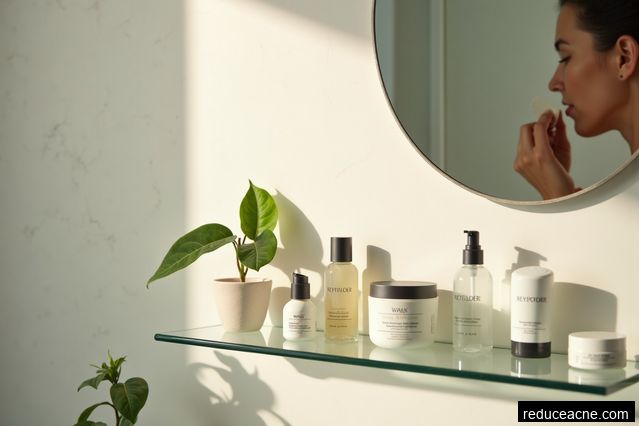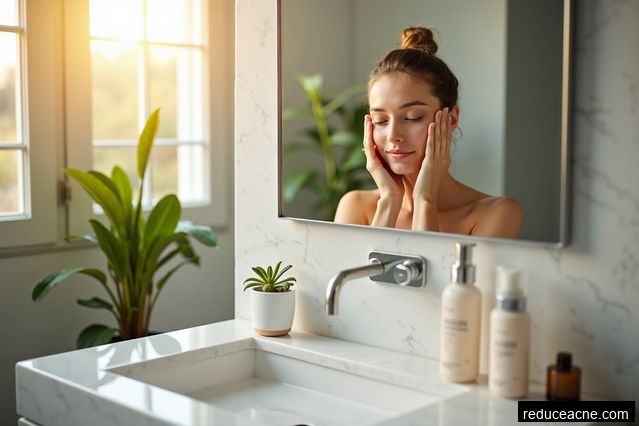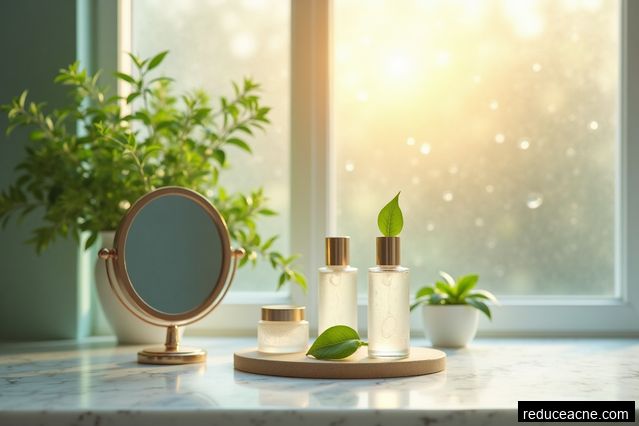Introduction
Acne. This five-letter word often strikes with a sense of dread, especially for those who have fought long and hard with this persistent skin condition. According to the American Academy of Dermatology, acne is the most common skin condition in the United States, affecting up to 50 million Americans annually. But what exactly is acne, and why does it present itself in different forms? This article aims to demystify the types of acne, from blackheads to cystic acne, providing a comprehensive understanding of this widespread skin problem.
To better manage acne and to formulate an effective treatment strategy, one must first grasp the nature of its different types. This will help in detecting the early signs of acne, preventing further skin damage, and making informed decisions about suitable skincare products and treatments. In the following sections, we will delve deep into each type of acne, providing you with essential knowledge to combat this skin condition.
As we delve further into the complexities of skincare, it becomes evident that the journey to clear, radiant skin often begins with understanding the basics. The "Introduction" section serves as the gateway to this world, offering a foundational understanding of common skin concerns like acne. Beyond the surface-level definition, it unveils the psychological impact of this condition, highlighting how it can affect one's self-esteem and overall well-being. By exploring the emotional toll that acne can take, readers are encouraged to approach skincare not just as a physical routine but as a form of self-care and empowerment.
Furthermore, the "Introduction" section paves the way for a deeper exploration of the factors contributing to acne development. From hormonal imbalances to environmental triggers, it sets the stage for a comprehensive analysis of the root causes behind this prevalent skin issue. By shedding light on these underlying mechanisms, readers are equipped with the knowledge needed to make informed decisions about their skincare regimen, steering them towards effective solutions tailored to their specific needs. In essence, the "Introduction" segment acts as a springboard for a holistic approach to skincare, inviting readers to embark on a journey of discovery and transformation.
Blackheads and Whiteheads
Blackheads and whiteheads are the most common types of acne. They are formed when the pores in the skin get clogged with sebum, a naturally produced oil, and dead skin cells. Blackheads, also known as open comedones, have a black or dark appearance due to the oxidation of the sebum when it comes into contact with air. On the other hand, whiteheads, or closed comedones, appear as small white or skin-colored bumps as the clogged pore is covered by a thin layer of skin, preventing oxidation.
For example, in a study conducted by the International Journal of Dermatology, it was found that 95% of the participants, all of whom were acne sufferers, had blackheads and whiteheads. This statistic underscores the prevalence of these types of acne. To manage blackheads and whiteheads, it's recommended to maintain a regular skincare routine that includes gentle cleansing and exfoliation, which helps to unclog the pores and prevent the buildup of sebum and dead skin cells.
Blackheads and whiteheads may seem like small skin nuisances, but managing them effectively can make a significant difference in your skin's appearance. One common mistake people make when dealing with these types of acne is squeezing them, which can lead to inflammation and scarring. Instead, gentle exfoliation and using products with salicylic acid or benzoyl peroxide can help unclog pores and prevent new blackheads and whiteheads from forming.
It's essential to understand that blackheads and whiteheads can be influenced by various factors, such as genetics, hormonal fluctuations, and skincare habits. For example, individuals with oily skin are more prone to developing blackheads, while hormonal changes during puberty can increase whitehead formation. By incorporating a consistent skincare routine tailored to your skin type and using non-comedogenic products, you can effectively manage these pesky blemishes and promote clearer, healthier skin.
Papules and Pustules
Papules and pustules are the next types of acne that we will tackle. A papule is a small, red, and inflamed bump on the skin that doesn't contain pus. It's formed when the walls surrounding the skin's pores break down due to severe inflammation caused by bacteria, sebum, and dead skin cells. Pustules, on the other hand, are similar to papules but are filled with pus. They appear as red bumps with a white or yellowish center.
According to a case study published in the Journal of Clinical and Aesthetic Dermatology, a 17-year-old girl suffering from severe papules and pustules experienced significant improvement after a six-month treatment plan that included a combination of oral antibiotics and topical retinoids. This example illustrates that while papules and pustules may be more severe compared to blackheads and whiteheads, they are still treatable with the right medical intervention.
When dealing with papules and pustules, it's essential to understand their distinct characteristics to effectively address them. Papules are small, raised bumps on the skin that can be tender to the touch and are often a result of inflamed hair follicles. These lesions do not contain pus and should not be squeezed, as doing so can lead to further inflammation and potential scarring. On the other hand, pustules are similar in size to papules but are filled with pus, giving them a white or yellowish appearance. It's crucial to resist the temptation to pop pustules, as this can spread bacteria and worsen the condition.
To treat papules and pustules effectively, a targeted skincare routine is key. Incorporating ingredients like salicylic acid or benzoyl peroxide can help reduce inflammation and unclog pores, preventing further breakouts. Additionally, gentle cleansing and moisturizing are vital to maintaining skin health and preventing excessive dryness or irritation. Consulting with a dermatologist can provide personalized recommendations for managing papules and pustules based on your skin type and severity of the condition. By approaching these acne lesions with care and the right products, you can effectively manage papules and pustules for clearer, healthier skin.
Nodules and Cystic Acne
Nodules and cystic acne represent the more severe types of acne. Nodules are large, solid, and painful lumps beneath the surface of the skin, caused by the buildup of sebum, bacteria, and dead skin cells deep within the pores. Unlike nodules, cystic acne is filled with pus and can cause severe scarring if not treated properly. Cystic acne is the most severe form of acne and often requires medical intervention.
As an example, in a clinical trial conducted by the Journal of Drugs in Dermatology, patients with severe nodular and cystic acne showed a significant reduction in the number of lesions after undergoing a 20-week treatment regimen with isotretinoin, a powerful acne medication. This demonstrates that even the most severe types of acne can be effectively tackled with the right treatment plan, but professional medical advice is critical in these cases.
While nodules and cystic acne are both forms of severe acne, they differ in their characteristics and treatment approaches. Nodules are characterized by large, solid bumps deep within the skin that are often painful to the touch. These lesions develop when the hair follicles become clogged with excess sebum, dead skin cells, and bacteria, leading to inflammation and the formation of hard, tender nodules. On the other hand, cystic acne presents as large, pus-filled lesions that are typically softer to the touch compared to nodules.
Managing nodules and cystic acne requires a comprehensive approach that may include prescription medications like isotretinoin, corticosteroid injections to reduce inflammation, and in some cases, drainage procedures to alleviate pain and pressure. Additionally, incorporating gentle skincare routines, avoiding harsh products that can exacerbate inflammation, and maintaining a healthy diet can also play a crucial role in managing these severe forms of acne. Seeking professional dermatological advice is essential to develop a personalized treatment plan tailored to address the specific needs of individuals dealing with nodules and cystic acne.
Conclusion
In summary, understanding the different types of acne – blackheads, whiteheads, papules, pustules, nodules, and cystic acne, is the first step towards effective acne management. From the mild forms of blackheads and whiteheads, to the more severe nodules and cystic acne, each type requires a unique approach for treatment. By being well-informed about these various types, you can make proactive decisions about your skincare routine and seek timely medical intervention if necessary.
Looking forward, remember that managing acne is a journey that requires patience and consistency. Regular cleansing, exfoliating, and moisturizing can help manage milder forms of acne, while severe cases may require professional medical intervention. And always remember, every skin is unique, so what works for others may not work for you. Therefore, understanding your skin type and the type of acne you have is key in your journey towards clearer skin.
As we reach the conclusion of our discussion on acne types, it’s crucial to emphasize the importance of personalized skincare routines. While understanding the various forms of acne is essential, tailoring your approach based on your skin type and specific concerns can significantly impact the effectiveness of your treatment. For instance, individuals with oily skin may benefit from oil-free products to prevent clogged pores, whereas those with sensitive skin may require gentle, soothing ingredients to avoid irritation.
Furthermore, the journey to clear skin doesn’t end with identifying your acne type; it involves consistent dedication to a comprehensive skincare regimen. In this regard, incorporating targeted treatments such as salicylic acid for blackheads or benzoyl peroxide for inflammatory acne can yield noticeable improvements over time. Remember, achieving clear skin is a process that requires patience and persistence, but with the right knowledge and commitment to tailored skincare, you can effectively manage and minimize acne breakouts for a healthier complexion.







